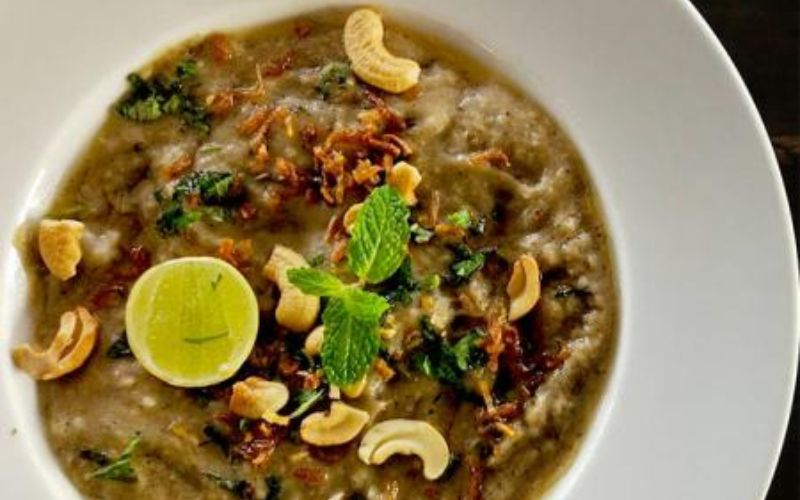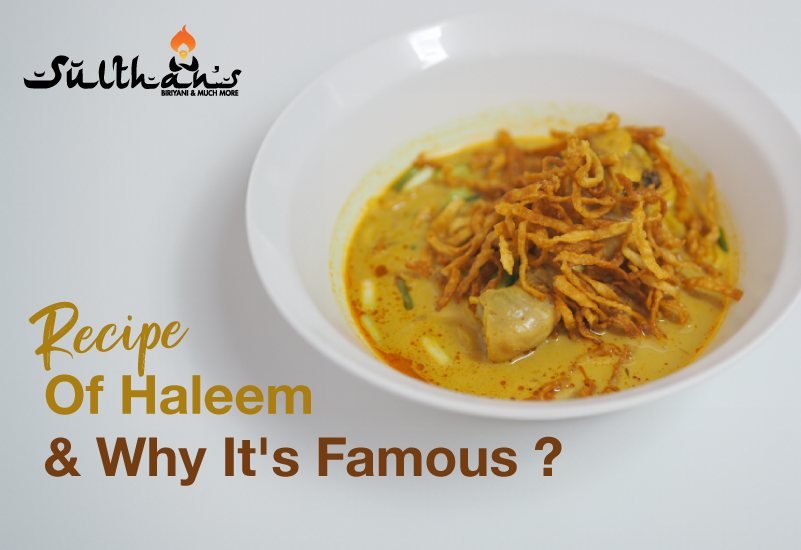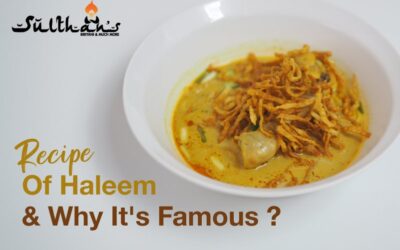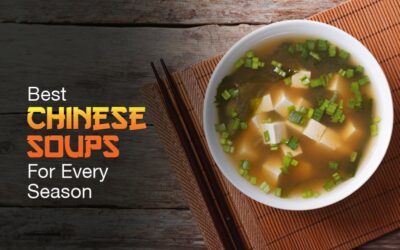Introduction
Haleem, a beloved stew known for its richness and depth, began its journey in the Middle East. With roots tracing back centuries, it has meandered through diverse cultures, adopting unique ingredients and flavours. This culinary marvel stands as a testament to the interconnectedness of global cuisines, embodying a blend of traditions, tastes, and communal experiences.
As haleem spread from its birthplace, it transformed, reflecting the local palates from Central Asia to the Indian subcontinent, enriching its narrative and significance in cultural celebrations. Today, haleem symbolises a culinary heritage that bridges geographical and cultural divides, cherished worldwide for its comforting essence and nourishing soul.
The Origins of Haleem

Haleem, also known as Harees or Harisa in some regions, is believed to have originated in the Arab world, particularly in the Middle East. Its roots can be traced back to the 7th century, during the time of the Umayyad Caliphate.
The dish was initially a simple mixture of wheat, meat, and salt, cooked slowly over a fire. It was a staple food for soldiers and travellers due to its high energy content and ease of preparation.
The Spread of Haleem
As trade routes expanded, haleem began to spread beyond the Middle East. It found its way into the cuisines of Central Asia, the Indian subcontinent, and even parts of Europe. Each region added its own twist to the dish, incorporating local ingredients and cooking techniques.
In Persia, the dish evolved into what is known today as “Harees,” with the addition of spices such as cinnamon and cardamom. In the Indian subcontinent, particularly in Hyderabad, haleem was enriched with lentils, barley, and a blend of aromatic herbs, creating a unique and beloved variant known as “Hyderabadi Haleem.”
Haleem in Cultural Celebrations
Haleem is not just a dish; it’s a symbol of communal harmony and celebration. In many Muslim-majority countries, it is a traditional delicacy prepared during the holy month of Ramadan. The dish is often served at Iftar, the evening meal when Muslims break their fast. It is prized for its nutritional value, providing a balanced meal that replenishes energy after a day of fasting.
In addition to Ramadan, haleem is also a popular dish at weddings, festivals, and other social gatherings. Its preparation is considered an art, and the slow-cooking process is a labour of love that brings people together.
The Evolution of Haleem

Over the centuries, haleem has undergone a remarkable evolution. From a simple porridge to a gourmet delicacy, the dish has adapted to changing tastes and culinary trends. Today, there are countless variations of haleem, each with its own unique flavour profile and ingredients.
ALSO CHECK – Biryani 101: Exploring Regional Variations and Their Unique Ingredients
There has been a growing interest in fusion cuisine in recent years, leading to innovative versions of Haleem. Chefs are experimenting with new ingredients and cooking methods, creating dishes like “Haleem Biryani” and “Haleem Pizza.” These modern interpretations are a testament to the dish’s versatility and enduring appeal.
Nutritional Value of Haleem
Haleem is not only delicious but also highly nutritious. It is a rich source of protein, fibre, and essential vitamins and minerals. The slow-cooking process ensures that the nutrients are well-preserved, making it a wholesome meal.
The dish is particularly beneficial for those who are recovering from illness or need a boost of energy. Its high protein content aids in muscle repair and growth, while fibre helps in digestion.
Haleem in the Modern Culinary Scene
Today, haleem has found its place in the global culinary scene. It is celebrated not only for its rich history and cultural significance but also for its delicious taste and nutritional benefits. Restaurants specialising in haleem have popped up in various parts of the world, catering to a diverse clientele.
The dish has also caught the attention of food bloggers and culinary experts, who are exploring its potential and introducing it to new audiences. Social media platforms are abuzz with Haleem recipes, cooking tips, and mouthwatering photos, further increasing its popularity.
Bottom Line
Haleem is more than just a dish; it’s a narrative woven through time, showcasing the journey of culinary tradition across borders. Originating in the Middle East, this humble stew has traversed continents, adapting to local tastes while preserving its essence. Each spoonful is a testament to the enduring power of food to connect and unify diverse cultures.
As Haleem made its way from its ancestral lands to the global stage, it has not only delighted taste buds but also served as a bridge between different cultures, fostering a sense of unity and shared heritage. Enjoying a bowl of haleem is an experience that transcends mere consumption; it’s an immersion into a rich, evolving tradition that continues to resonate and inspire across generations.
FAQs
- What is haleem?
Haleem is a rich, slow-cooked stew made from a mixture of meat, lentils, wheat or barley, and spices. It is a popular dish in the Middle East, Central Asia, and the Indian subcontinent.
2. Where did Haleem originate?
Haleem is believed to have originated in the Arab world, particularly in the Middle East, during the 7th century. It was initially a simple mixture of wheat, meat, and salt consumed by soldiers and travellers.
3. How has Haleem evolved over time?
Over the centuries, haleem has evolved into various forms and flavours as it spread across different regions. Each area added its own local ingredients and cooking techniques, resulting in diverse variations like Hyderabadi Haleem in India and Harees in the Middle East.
4. What is the significance of Haleem in Ramadan?
Haleem is a traditional delicacy prepared during the holy month of Ramadan in many Muslim-majority countries. It is often served at Iftar, the evening meal when Muslims break their fast, due to its nutritional value and energy-boosting properties.
5. Are there any modern variations of Haleem?
Yes, chefs and culinary enthusiasts have experimented with Haleem, creating modern variations like Haleem Biryani and Haleem Pizza. These fusion dishes combine traditional haleem with other cuisines, offering new flavours and experiences.
6. What are the nutritional benefits of haleem?
Haleem is a nutritious dish, rich in protein, fibre, and essential vitamins and minerals. The slow-cooking process preserves the nutrients, making it a wholesome meal that aids in muscle repair, digestion, and overall health.
7. How has Haleem gained popularity globally?
Haleem has gained global popularity due to its rich history, cultural significance, and delicious taste. Restaurants specialising in haleem have opened in various countries, and the dish is widely discussed on social media and food blogs, introducing it to new audiences worldwide.




